Most epic road trips are booked long in advance, have a detailed itinerary and a list of must do’s along the way. So with a week’s notice and knowledge of Chile limited to where it was located in the world we had our bags packed and were boarding a plane to Santiago de Chile. You might say we were ill prepared for our Chile Campervan Adventure but some things you need to do on the fly.
Itinerary
Southern route
- Santiago de Chile (12 nights)
- Santa Cruz (1 night)
- Pichelemu (1 night)
- San Clemente (1 night)
- Reserva Nacional Altos de Lircay (3 nights)
- Pucon (4 nights)
- Llanquihue (Puerto Varas) (3 nights)
- Chiloe (4 nights)
- Carretera Austral (7 nights)
- El Chaltén (3 nights)
- El Calafate (Perito Merino) (2 nights)
- Torres Del Paine (6 nights)
- Puerto Natales (3 nights)
Northern route
- NaviMag Ferry (4 nights)
- Parque Nacional Radal Siete Tazas (1 night)
- Elqui Valley (1 night)
- Parque Nacional Nevado Tres Cruces (1 night)
- Pan De Azúcar (1 night)
- Pica (2 nights)
- San Pedro de Atacama (2 nights)
- Vicuna (1 nights)
Santiago and surrounds
- Mendoza (4 nights)
- Aconcagua (1 night)
- Valpraiso (1 night)
- Santiago de Chile – (2 nights)
A key ingredient to any road trip isn’t a map or a route but in fact a vehicle! Costs of hiring a campervan for 3 months was in a word, exorbitant! Plus, there are limits to where you can go and insurances make it even more costly. This left a vehicle purchase our primary goal whilst based in Santiago in between checking out the sights and sounds of this very European and cosmopolitan city.
Our detailed guide to buying and selling a car in Chile will explain in precise detail how to do this. From navigating the bureaucracy, finding a suitable vehicle and having the confidence to be able to sell it before having to leave. So we certainly had some adventures just getting all this sorted!
Meanwhile, while all this was happening we got to try some of the local coffee, restaurants, cervezas and vinos that Chile is famous for. Staying in the inner city suburb of Lasterria made all of this very accessible. Our Airbnb with Frenchmen and local bar owners Arthur and Victor was extremely helpful to get acquainted with the city. We sourced our local barista down at Kingston Cafe serving tasty Marley Coffee, our local pub Jose Ramon 277 who had a good selection of craft beers and a decent copa de vino la casa.
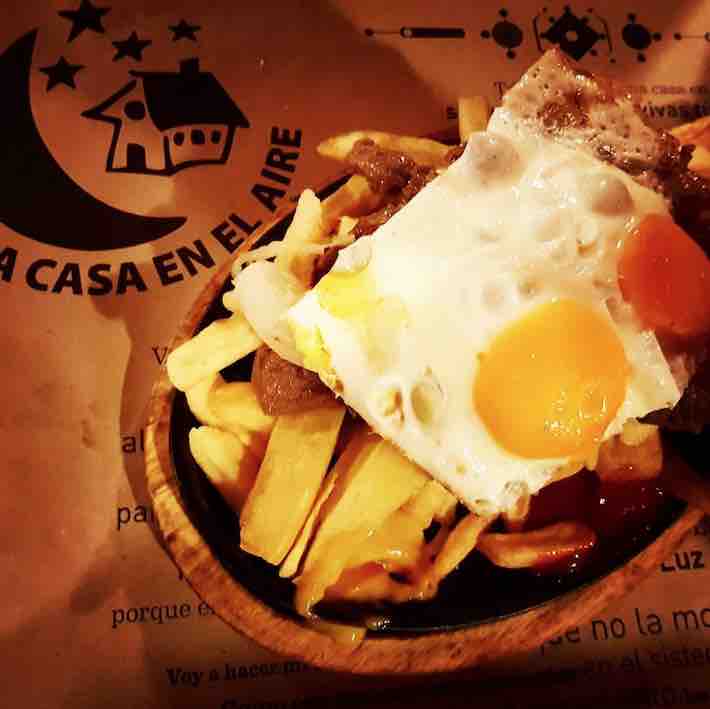
Bienvenidos! Yummy beginnings at La Casa en el Aire con Chorrillana Clasica
Finally but only 2 weeks later, after seeing 5 or 6 vehicles, we settled on a Toyota 4 Runner which had some modifications made for road tripping and it’s own second battery system for powering our gear. But more of our vehicle later. For now, after transferring the cash using a great new service Transferwise and attending the local notary for the final pieces of paperwork we were on our way! Which way was now the next thing to work out.
A decision made to head south, first. Chile is a long ‘french fry’ of a country and Santiago is in the top 3rd. Being November we were coming into summer and the southern Patagonia region would be opening up more in December. After contemplating a shorter jaunt north to the Atacama desert we decided to put this off until the end.
Santa Cruz was a medium-sized town about 200km south of Santiago. We had an afternoon of driving after wrapping up our Santiago life and jumping in our campervan. A small issue was we had no wifi or data to tap into yet as the rules about foreign phones operating on Chilean SIMs prevented us being connected. With no way of sourcing a suitable campsite, we parked up in a backstreet of Santa Cruz. Not much happening in town except a Prape’s Sushi. A good local wine and some sushi you might mistake as an empanada. Then it was the first night in our camper, trying to remain inconspicuous on the streets of Santa Cruz.

Chilean sunset from Ruta 5 heading south to Santa Cruz
West through wine country till the coast opened up to the Pacific ocean. This was Pichelemu a windswept surfing town. It was quite desolate and we continued south to a lovely campsite at Camping Laguna del Perro by a lake. Our main objective was to pull everything out of the camper and set it up the way we needed it. So an afternoon was spent getting acquainted with our new home who we name La Bestia ‘The Beast’ as it looks like a pretty menacing off-road machine. Plus it was our new Bestie for our road trip.

Introducing La Bestia (The Beast), Sling Adventures HQ for our exploration of Chile
Journeying south in search of some nature we first stopped in San Clemente. A full day driving and a late meal at one of the mum & pop restaurants that seems to be on the street corners of many small towns. Our new mate Juan served us some tasty burgers before we found another back street to bunk down in.
Heading into the hills outside San Clemente we arrived at a very tranquil Camping Los Nogales de Vilches located just shy of the National Park. A hike in the Reserva Nacional Altos de Licray the next day was limited to the Sendaro del Paine trail and a visit to a cooling waterfall at the top of the 300m ascent. The following day a more ambitious hike up Enladrillado a 1000m ascent above the snow line to a bizarre lunar landscape at the top. We camped that night at the campground within the National Park.

The campgrounds in Chile are some of the best we’ve seen anywhere in the world. Good facilities, quiet, and extremely scenic!
Touted as the adventure capital of the Lakes District in the middle of Chile, arriving into Pucon our interests were more transfixed on the very pointy snow-capped and smoke billowing volcano that towered over the town and the shimmering lake at its base. Little did we know that two days later we would be standing at its peak and peering into the volatile crater. Our hike up the Villarica Volcano was one adventure we’ll not soon forget.

Looking into the eye of the 2,860m high Villarrica volcano, we can also now confirm it is one of Chile’s most active.
A quaint town, Pucon kept in theme as an adventure base for the surrounding region. Our dose of adventure had us have a recovery and work a day out of the campsite at Parque La Poza. We finished off our stay with a visit to both versions of the Ojos del Caburgua waterfall and a soak in the soothing hot springs at Termas Los Pozones.

We definitely felt like a dip but unfortunately no swimming to preserve this beautiful blue lagoon!
With Pucon the adventure capital, nearby Puerto Varas is like it’s understated southern cousin. A little grubby around the edges but set on an equally dramatic lake and boasting not one, but two conical volcanos! We stayed just before Puerto Varas at the German-founded town of Llanquihue which also gave its name to the lake, Chile’s second largest. Camping Werner was run by an elderly German man. We arrived late and were the only guests for three nights to enjoy the perfect views of the lake with volcanoes Orsono and Calbuco standing guard.

Standing 2,652m the Orsono volcano towers over Lake Llanquihue and makes a nice backdrop to our Puerto Varas campsite.
The main route south Ruta 5 is part of the 30,000km Pan American Highway and continues on to the southern island of Chiloe where it finishes at the small town of Quellon at the bottom of the island. Chiloe is a world removed from the rest of Chile and is dotted with wood-shingled churches and a unique island way of life full of pagan rituals and beliefs such as ghost ships and goblins.
A small boat trip to see some Magellanic and Humbolt Penguins from the long beach at Pumillahue was a good afternoon activity albeit with a group of hysterical school kids and teachers. An evening spent at Agrotourismo Chepu just outside Chepu. With intentions of an early morning kayak, it seems not much in Chepu to indicate kayaks were on offer.
Quincheao Island of Chiloe Island had us attend an impromptu charity lunch for the local fire station. Then drove the length of the island on a meander to little desolate and dusty seaside towns. We picked one in Palqui to camp at and were the only people we saw at Camping Paredes.
After two weeks in the campervan, we decided to mix things up a bit for our final night on Chiloe with a lovely homely stay at Isla Bruja Lodge set over a lake in the wilderness. Hosts Marie and Francisco were lovely and the dog Lara was adorable. A wood-fired hot tub provided a much-needed soak!

A wood-fired hot tub in the wilderness followed by the wonderful hospitality at @islabruja Gracias Marie y Francisco!
A five-hour car ferry operated by Naviera Austral from Quellon to Chaiten took us from Isla Chiloe back to the mainland at the remote outpost of Chaiten. A wonderful sunset enjoyed on the aft deck of the ship. Arriving into Chaiten at the lovely hour of midnight only allowed us to pull up on a street corner and turn in for the night.
This marked our start on the Carretera Austral a 1200km rocky road winding through Chile’s northern Patagonia region. Starting from Puerto Montt to Villa O’Higgins most of the road is unpaved and it serves as a connection to many small isolated towns like Chiten who before 1999 only had access to the rest of Chile via air or sea. It is a very scenic drive in between snow-capped mountains, raging rivers, farmland and serene lagoons.
We stopped at Reserva Nacional Queulat to see the hanging glacier over the lake and camped within the Conaf run campground at Camping Ventesquero Colgante. After missing the zodiac ride to the base of the falls (twice) we hiked to the lookout for better views and saw a few ice blocks drop some 900m to the lake below!

Ventisquero Colgante (Hanging Glacier) in the remote Queulat National Park is suspended some 900m and regularly drops house-sized chunks of ice into the valley below.
Continuing south we picked up our vehicles ownership papers (Padron) and spent a pleasant night in Coyhaique at El Camping campground spent a night and a one-day hike to Cerro Castillo, magnificent spired peaks towering over a bright blue glacial lake, one of the best hikes we’d ever done.

Cerro Castillo is a virtually unknown peak and hike in Chile’s northern Patagonian region. Featuring a glacial lake it is a stunning reward after over 1000m of climbing.
A long day’s drive followed along with booking a boat trip to to the remote and spectacular San Rafael Glacier passing bus-sized icebergs along the way and sipping some whiskey out of 1000-year-old glacial ice!

The remote and immense San Rafael Glacier.
Our stop in Rio Tranquillo by the lake broke up the drive to the border town of Chile Chico where we had a nice BBQ at Hosteria de la Patagonia and made our way to Argentina after some negotiation with the customs officials to allow us to take our car out of Chile.
Bienvenidos Argentina! A long drive of nearly 1000km had us arrive late into Argentina’s trekking capital of El Chaltén. A long and memorable hike was had to Cerro Torres and Cerro Fitz Roy in one day covering some 33km in around 9 hours! An action filled hike with spiky mountains and glacial lakes and streams to enjoy in walking distance from our campsite at Camping El Relincho, simply beautiful.
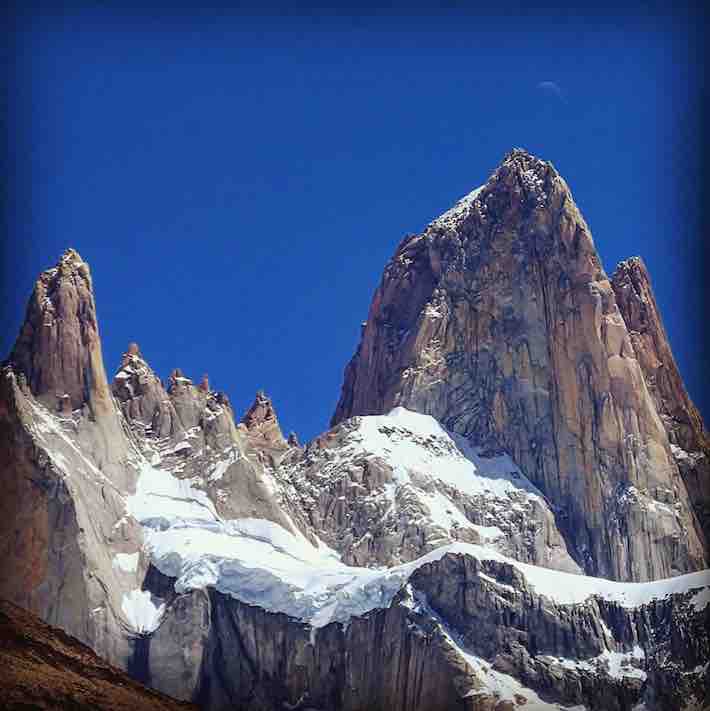
Named after the skipper of HMS Beagle (of Charles Darwin fame). Fitz Roy stands at 3405m and is one of the most difficult mountains in the world to climb.
Completing our brief stay in Argentina, El Calafate served as a base for a trip to the enormously impressive and accessible glacier of Perito Merino. 80km west of El Calafate you can almost reach out and touch the 5km wide glacier from the viewing platform. It looks like the Wall from Game of Thrones towering above Lago Argentino and you need not stay long before large chunks of ice calve off from the towering seracs and pound thunderously into the lake below. As one of the few advancing glaciers in the world, the whole setting is very surreal. A visit to the ‘Glacarium’ outside El Calafate provided some much welcome facts and figures on glaciers and the southern Patagonian ice field.

An imposing an impenetrable fortress, the advancing Perito Moreno Glacier dwarfs all that visit.
The star attraction on many trips to Chilean Patagonia, Torres Del Paine was the logical next step on our adventures south. After crossing back into Chile after our brief stay in Argentina it was into Puerto Natales and a brief stay at Camping Guino to acquire necessary supplies for a week in this picture postcard national park.

Twisted trees and craggy peaks. Some of the smorgasbords served up in Torres Del Paine
With trekking the main drawcard we were continuing in the mode of flying by the seat of our pants and turning up with nothing booked. With the popular ‘W’ trek booked out months ago our approach was to hike as much of it we could while using our trusty La Bestia as our bed for each night.
With three small, albeit windy, day hikes as a warm-up, we embarked on three sections of the ‘W’ trek. First up, Mirador Los Torres to view the iconic granite towers that grace the Patagonia clothing label. Then a full undulating day hike towards Los Quernos camp. Lastly, we took the catamaran to Paine Grande and hiked to the mouth of Glacier Grey where we were graced with some rare sunny skies. All in all, covering 65km of the 75km ‘W’ trek avoiding the plush yet expensive fully catered lodges instead residing in our preferred home on wheels and mastering the art of free camping. The magical scenery didn’t appear any different! – Read our Torres Del Paine DIY Guide

Introducing the wild evolutionary father of the Llama, the Guanaco. His mate is not small, he’s just far away!
A few days spent getting our gear and ourselves cleaned after a week in the wilderness of Torres Del Paine. Also, some new digs in the Heilo Patagonia Hostel. Well, it was Christmas after all! Getting the last few supplies before everything shut its doors. Feliz Navidad!
Christmas Day was spent getting things organised for 4 days at sea. More precisely the NaviMag Ferry that cruises the Chilean Fjords running up from Puerto Natales to Puerto Montt. To avoid a long drive back north, this cargo come passenger ferry does a 4-day connection and will take the car also!
Such remote and dramatic scenery that many people never get to see. Glaciers, wildlife, birds and countless uninhabited islands appear the entire route and their enthusiastic naturalist Percy keeps everyone informed of the key sights and run lectures on the flora and fauna. Quite a memorable trip! – Read more about the NaviMag experience.
After arriving in Puerto Montt we attempted to access Parque Nacional Alerce Andino during a torrential rainstorm, we were turned back due to apparently fallen trees. We ended up staying in a pleasant campground with a fast-flowing river at Camping Las Bandurrias.

With a 4m wingspan, the wandering albatross has the largest wingspan of any bird and can cover over 120,000km a year!
With New Years approaching we were on our way back up north. A suitable spot for bringing in the New Year was found at Seven Cups Radal National Reserve. The ‘7 cups’ comprise 7 consecutive waterfalls flowing through a canyon. Being New Years many campsites were full of Chilean families so we found a secluded site in the woods to have a nice BBQ and a bottle of Malbec, OK make it two…

Seven Cups Radal National Reserve
Continuing the never-ending journey north along the Ruta 5 we soon passed our starting point of Santiago and were in a new and unchartered territory. The scenery had changed dramatically and we were now presented with dry, arid and desolate wastelands.
Our first stop north being the Elqui Valley, home to the heart of the pisco grape growing region that produces what Chile claim is uniquely and originally theirs. A small dispute with neighbouring Peru is still yet to be settled! We took a 3km walk to the Los Nichos Winery who still distil Pisco via traditional means followed by a visit to Cavas Del Valle winery who only sell their delightful wine from their cellar door.
We found a great campsite at Refugio Del Angel in an oasis of sorts along the river running through the Elqui Valley. A hammock, a BBQ, and a running stream made a serene start to our northern adventures.

Hanging out in Pisco Elqui, one of the nicest campsites in Chile thus far!
Further north it was time to head into the high Andes. You can, in Chile, soar in altitude while driving without knowing it. We drove into the isolated and lunar landscape of Parque Nacional Nevado Tres Cruces and soon found we were at 2,700m. We stopped in one of the remotest places we’ve ever camped, simply nothing around but us, and of course the billion stars overhead.
We continued the next day for a whistle-stop tour of the lagunas perched high in the Andes. After passing 4500m we descended into a rutted and truly terrible road to arrive at Laguna Santa Rosa watching some flamingos have their lunch as we ate ours under a harsh, dry and brutal sun.
Next, we cruised out to Laguna Verde home to hot springs on a larger more impressive lake. Along the way passing Ojos del Salado, the world’s highest active volcano and second highest mountain in South America (60m short of Aconcagua in Argentina). More impressive however was the ice formations in the middle of the arid desert. Tall spikes of ice just standing there with no other snow to be seen for miles. Truly bizarre and the highlight of the high Andes visit.

From the bizarre files. 3m icicles formed naturally in one of the hottest and driest deserts in the world?!
From the high Andes to sea level, we arrived into Pan De Azúcar National Park on the coast. The Conaf campsite situated with views over Isla Pan De Azúcar home to penguins and sea otters, although these are difficult to see from land. The beach campsite was a delight, after many days of hard travelling and long days driving through nothingness, it was relaxing to spend a few days to absorb the oxygenated sea air and view diving petrels, condors and baby gulls dancing in tight formation over the waves.
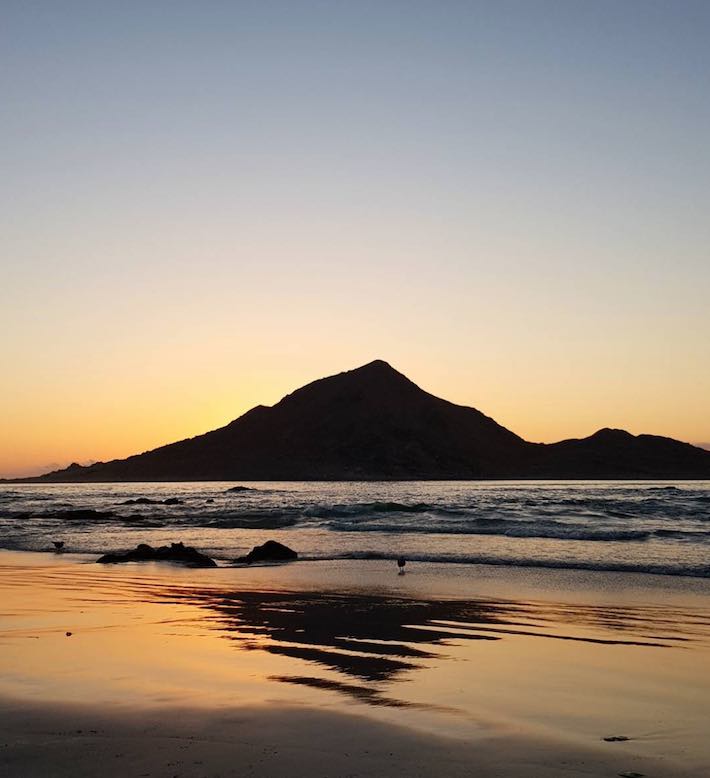
Beach camping at its best overlooking Isla Pan de Azucar, home to Humboldt Penguins, Sea Lions, Otters, Pelicans and Diving Petrels.
Northern Chile is overwhelming in its vastness. 300km of driving and not pass a town or have any major change in the landscape. After a short impromptu overnight at a delightful little seaside town of Hornitos, we continued north to Iquique before heading inland to a supposed oasis town of Pica. A very sleepy town we did find our oasis in the form of Icinita’s campground, equipped with a refreshingly pool to soak in.
A day trip out to some abandoned nitrate mining towns of Humberstone and Santa Laura which tell a story of the history of Chile, quite fascinating to see these towns, abandoned and somewhat untouched yet preserved in time due to the dry climate of the desert.

We’re not in Patagonia anymore Toto… Atacama desert near Pica.
Continuing on the northern Atacama desert escapades we ambled into San Pedro de Atacama, the base for many trips out to the more popular sites in this the driest desert in the world. We sadly missed out on a tour of Chuquicamata Copper mine, the source of Chile’s wealth and influence on a young revolutionary in the form of Ernesto ‘Che’ Guevara.
Instead, we skipped through town and headed out towards El Tatio Geysers, stopping at 3,500m to camp out under the stars in order to arrive at the geysers for sunrise. At 4 am wake up had us driving rather treacherous and incredibly bumpy road in the dark to arrive at the geyser field at 4,300m. The world’s highest and southern hemisphere’s largest, it was an eerie (and chilly) start to the – 2-degree morning. To warm up we also hopped in the thermal baths.
A birthday reward had us stay at the Pascual Andino Hotel which was a great choice to enjoy some luxury after a few hard weeks on the road in the desert.
Valle de la Luna
Outside San Pedro de Atacama earth turns more moonlike as the dry, dusty and rocky landscape absorbs the senses. We took a drive and contemplated what life living on the moon would be like in a place that very rarely receives any rain. Some weather stations have never recorded rainfall!

Contemplating what life living on the moon would feel like whilst overlooking Valle de la Luna.
Travelling further south en route back to Santiago we revisited the Elqui Valley to enjoy an observatory visit. An activity that was prevented on our prior visit due to an overly bright full moon. We went to Alfa Aldea observatory just outside Vicuna. A family run and very low key establishment that allowed an entry-level explanation of the constellations with some telescope time to see some distant stars and galaxies. Very informative and look forward to more observing of the stars!

Getting to know the solar system a little better while stargazing from the comfort of a blanket and glass of vino.
After a brief return to Santiago to get a service on our beloved La Bestia, we motored off over the Andes into Argentina and down into Mendoza. After a scout around for a suitable area to base ourselves we opted to treat ourselves for a night in a hotel for a night in central Mendoza city at the Raices Aconcagua. A thick, juicy steak washed down with a Mendozan Malbec followed at the nearby La Lucia Grill. A great introduction to the region!
The next day we headed south to the Uco Valley and found a nice campsite at Camping El Festival, it was crowded with families out for the weekend but we found a spot to setup camp before diving in their very inviting, and very large, pool! Surrounded by families most left for the night leaving a handful of families to enjoy the night. Watching the local BBQ etiquette we created our own Argentinian Parilla for the next 3 nights modifying the cooking process until we got it just perfect. Slow cooked steak and a bottle of the local Malbec was a good way to spend a few days in Mendoza.
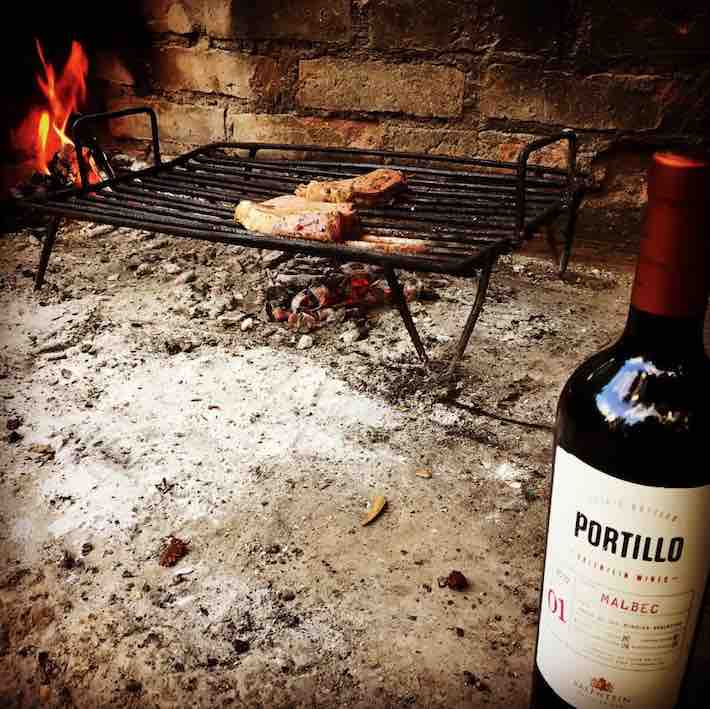
Meat + Malbec = Mendoza. Perfecting the asado experience.
Heading back to Santiago across the Andes we stopped for a night to hike to the base camp of the highest mountain in South America, Aconcagua. Standing at 6960m it is the highest mountain in the world outside the Himalayas. The 3-4 hour hike was easy to navigate up the valley although starting at 3000m and ascending to 3400m at base camp made breathing a little challenging! The views of Aconcagua though were persistently spectacular!
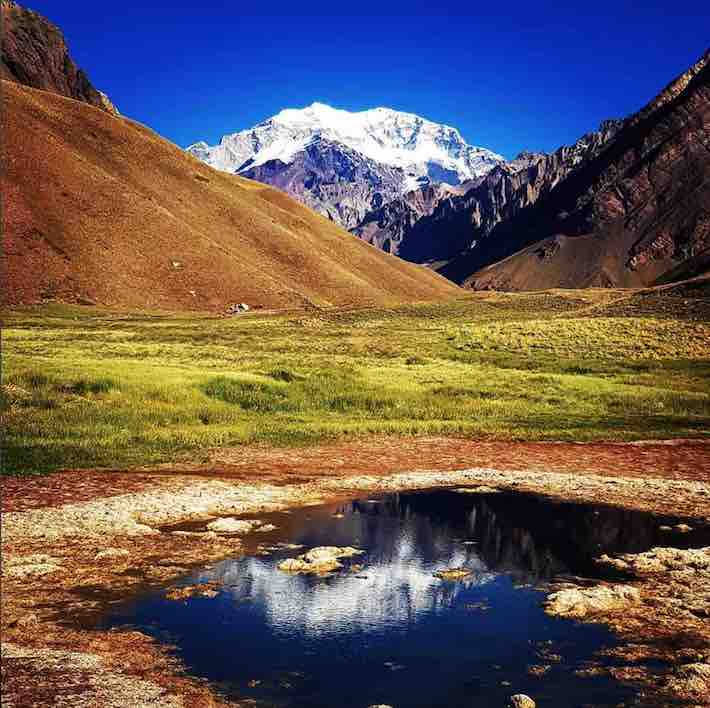
At 6960m Aconcagua is the highest mountain in the world outside the Himalayas. If you don’t fancy making the summit a hike to base camp makes a decent day hike
Potentially our final weekend n Chile for some time we headed to the coast to visit the photogenic Valpraiso. Known as a party town with artistic flair captured in the many murals, graffiti and street art it often steals the show from the more commercial centre of Santiago. A crucial port town prior to the Panama canal, Valpraiso has retained it’s gritty feel. We attempted to use the many funiculars bringing people to the top of the 42 peaks scattered around the city, alas the 4 or 5 we attempted were closed for repairs.
Our final day in Santiago began with a long awaited ascent of Cerro San Cristobal. Having attempted this in our first week some three months ago, we turned back due to heat and lack of water. This time we headed off at sunrise with water in tow and made it to the lofty summit some 300m above Santiago’s streets. The statue of the Virgin Mary overlooking the city, much like her son does in Rio de Janiero.

Standing atop the 300m high Cerro San Cristobal stands this 22m statue of the Virgin Mary. Also makes a challenging run of a morning!
Return to Sydney
With a sale of our beloved La Bestia campervan on our last day in Santiago it was a slightly rushed and certainly surreal departure from Chile. Our home for over 2 months handed over to be someone else to enjoy en route to the airport. Farewell La Bestia, you have created many memories and taken us over 15,000km over much of Chile without fail.
Our flight home to Sydney took a particularly southern route to avoid some strong headwinds. In the process skimming over the coast of Antarctica. Large floating cities of ice could be clearly seen floating in the Southern Ocean beneath the clouds. The world is an amazing place and it was a privilege to spend over 3 months exploring everything Chile had to offer.

A fly by of Antarctica on QF28 en route home from Santiago! City sized icebergs floating along the southern ocean.
Till next time!
We’ve enjoyed covering Chile and exploring the nation from end to end. Adventures continue as we explore the world one adventure at a time. Follow us on Facebook or Instagram to find out where we’re headed next.

The Sling Adventures Chile chapter has come to an end!! It’s been great covering the wide, diverse and vast landscapes of this fine land.












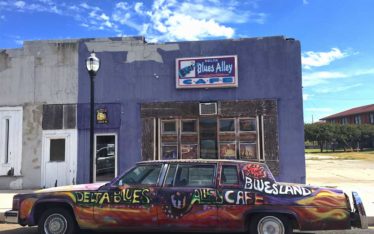


About The Author
Warren
Ever since venturing out the back gate into the bush as a kid, I've had a curiosity to escape and explore as often as I could. It's fair to say that my curiosity has continued to grow instead of fade as the years go on. It eventually came time to turn a few scribbled notes into some legible stories and travel tips for anyone with a similar curiosity as me.